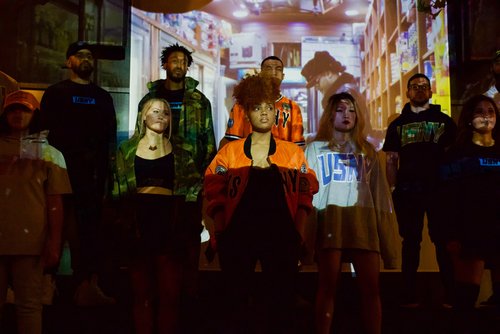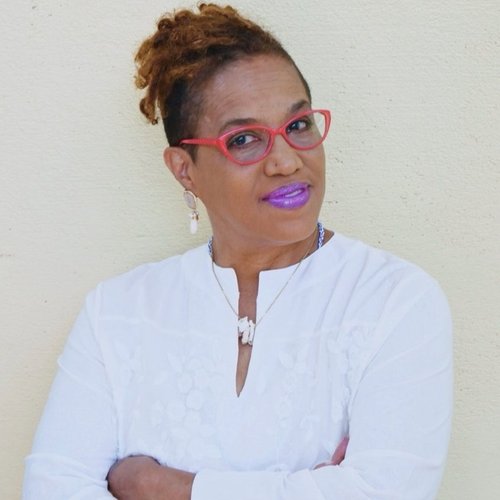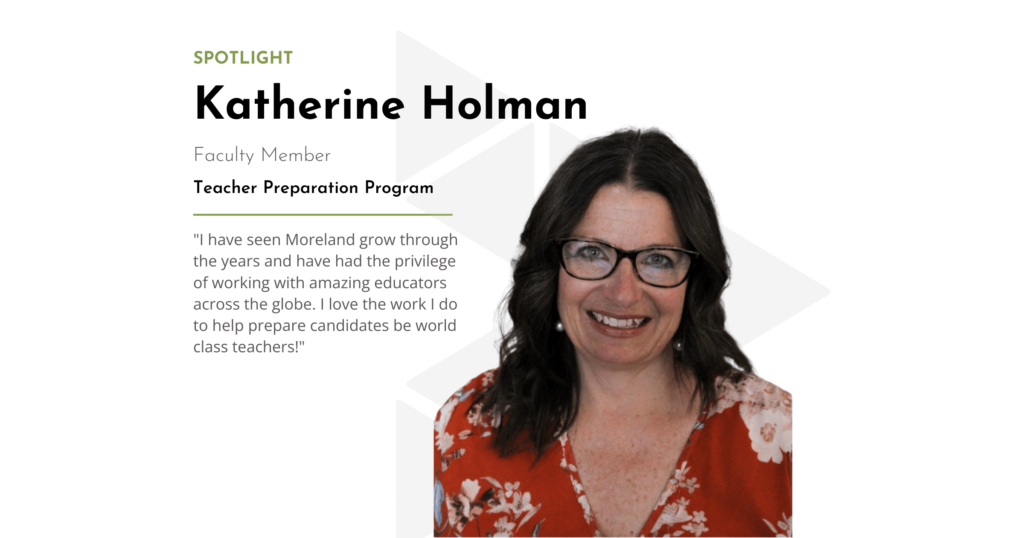Digital Storytelling for Learning Recovery and Wellbeing
| by Dr. Kim D. Harris
This is a call to all educators and those who are on the educational frontlines! Many pedagogical pathfinders are faced with two major issues that impact teaching, learning, and educational leadership across geographical borders:
- Teacher burnout
- Learning recovery
There is an urgent need to uplift teachers while also meeting the demands of policy, procedure, protocol, and best practice regarding learning recovery. Unique in-person and online learning environments have been, and continue to be, cultivated by educators around the world in response to the pandemic. These novel learning environments are birthing a variety of learning and social-emotional needs to be addressed in the coming school year. How can teachers approach the critical task of learning recovery while avoiding burnout?
My name is Dr. Kim D. Harris, and I am an educator, multidisciplinary artist, lifelong learner, and mother who is passionate about academic success as a change agent for the 21st century. In my research project, A mirror of voices: A community of culturally responsive digital storytelling, I uncovered ways digital storytelling can be a tool for learning recovery while also helping teachers find ways to avoid burnout. I hope to inspire you in this blog post to research ways to empower your students in the coming school year through digital storytelling!
This action-research study acknowledges the dynamics of storytelling and the possibilities of culturally responsive pedagogy by examining digital storytelling via online workshops. Digital storytelling is a technology-enhanced activity that offers teachers and students opportunities to ignite and inspire self-expression, creativity, and community by sharing personal narratives. I focused my research on African American, Jamaican, and Haitain learners in urban schools to examine ways of enhancing literacy development, self-awareness, and a sense of belonging in urban learning environments through digital storytelling.
Watch this brief introductory video with an outline of the research project and a welcome for study participants.
My Research Process & Outcomes
Let’s start by unpacking the data-collection and analysis process to better understand the implications for teachers and students of my research. I used the following two guiding questions:
- What are the elements of an online workshop on digital storytelling that may engage educators in thinking deeply about culturally responsive pedagogy for Black students?
- How do participants in a digital-storytelling workshop perceive the online workshop’s potential for addressing issues of cultural responsiveness in the classroom?
To answer these questions, I used a systematic framework borrowed from qualitative research (explained in more detail below) to organize participant data from an assortment of resources: field notes, transcriptions, interviews, audio-visual recordings, reflections, pre- and post-writing activities, threaded discussions, icebreakers, and others. An example of an activity students completed as part of my research is the I Am Poem. I adapted this well known poetry activity to yield diverse cultural perspectives: By leveraging students’ common ancestral links with storytelling, I helped foster a learning environment that was culturally responsive and engaging for the three groups of Black students in the classroom. This activity served as a segway and launching pad for students to engage with digital storytelling! After working to create their poems, students transformed each stanza into a PowerPoint slide. These slides came together into a three-to-five-minute digital story which reflected the individuality, cultural heritage, and personal narratives of each student.
The process of organizing and analyzing data was critical to the outcomes of my research. I created my own version of a triangulation grid, a qualitative research strategy that allowed me to test validity by merging research methods with data from various sources into one analysis. The triangulation grid was a gateway for analyzing data collected from student work and reflections through a culturally responsive lens. Data was organized by key words and phrases that highlighted cultural characteristics of students and teachers. The coding process for all of this data included color coding, highlighting, and even using Post-It notes! Each color represented a different concept, quote, or idea relating to the experience of African American students which, when grouped together, created patterns that helped answer my research questions.
Through this research project and the digital storytelling that took place, students built literacy skills and technology capacity while teachers enhanced their ability to integrate technology into the classroom. I saw increased creativity, critical thinking, and self-confidence in both teachers and students resulting from the student-centered environment fostered by digital storytelling. There was also an important implication on equity in education that resulted from this research project: The narrative around the digital divide among Black learners tends to focus on low academic performance caused by gaps in access to information and communications technology; moreover, the pandemic has caused a continuation of the technological marginalization for Black students for which many institutions are focused on learning recovery. The work from this research may provide a pathway to increased student achievement, particularly related to digital literacy among African American learners, by offering accessible and culturally relevant pathways to technology access and integration in the classroom. When assignments allow students to engage in storytelling and reflections that are relevant to their experiences and cultural backgrounds, students are more likely to engage deeply and become excited to learn. The ultimate success is in increased student engagement that enhances student learning!
Implications for Teachers and Students
As a previous classroom teacher, I came into this research with experience using PowerPoint and other presentation applications to facilitate lessons that wove cultural components into activities through particular vocabulary, images, and other personalized connections to students’ heritages and backgrounds. From my experience supporting student learning in this culturally responsive way, I recognized a pattern that might improve student learning in various contexts: Teachers can use presentation applications for digital storytelling within their lessons in ways that are responsive, relevant, and engaging to students; students can do the same by sharing personal narratives via digital presentations that tell stories about their experiences, heritages, and backgrounds. This digital-presentation technology provides innovative ways of meeting the needs of students of all backgrounds, including those with low incidence disabilities, by addressing literacy skills through digital storytelling. Students develop comprehension, reading, and writing skills by hearing and telling personally relevant narratives in the classroom.
Presentation applications including PowerPoint are an effective platform for creating digital stories as they are accessible and open-ended in nature. When students create digital stories, learning is engaging as subject matter becomes relevant to students’ lived experiences. Teachers leverage digital storytelling when they allow students to prepare and share a memory, thought, or reflection as part of a lesson; in this way, teachers support and fortify subject matter by interweaving academic content with stories in responsive, personalized, and relevant ways.
Teachers can also focus on specific skills and concepts while integrating social-emotional learning through digital storytelling. Teachers support social-emotional learning by, for example, providing opportunities for students to explore new ways of acting or thinking in response to the personalized stories they share. Students may even begin to think differently about themselves and others as they reflect on the narratives they share with the support of teachers and peers through digital storytelling. Finally, the stories students learn and create through digital storytelling elicit emotional responses and encourage them to pursue topics about which they are passionate.
“Digital storytelling as a learning-recovery tool will create a synergistic classroom environment that is engaging, student-centered, and culturally responsive. ”
Dr. Kim D. Harris
Digital storytelling as a learning-recovery tool will create a synergistic classroom environment that is engaging, student-centered, and culturally responsive. Teachers can weave critical concepts and missed standards into digital storytelling activities that allow students to use their own cultures, experiences, and narratives to fortify academic skills. When digital storytelling focuses on social-emotional learning, students increase their capacity for collaboration, clear communication, and self regulation by reflecting on those concepts in their work.
Opportunities for Further Study
Digital storytelling may also respond to the common challenges associated with teacher burnout. Dr. Sherrie Bourg Carter in her Psychology Today article describes burnout as, “…a state of chronic stress that leads to physical and emotional exhaustion, cynicism, detachment, and feelings of ineffectiveness and lack of accomplishment.” Physical and emotional exhaustion, cynicism, detachment, and even feelings of ineffectiveness are symptoms that may be signs of teacher burnout. It is important to consider the value of student-centered pedagogy as a means to support both students and teachers. Digital storytelling places ownership of learning onto students and increases student involvement in the learning process. Increased student ownership may reduce stress on teachers caused by unwanted behaviors and academic challenges due to student disengagement.
Educators, leaders, and researchers must also look at the climate and culture of schooling which ultimately impacts the classroom. Are schools promoting student voices in culturally sensitive ways? Do students have authentic opportunities to form part of the school community? Do students play an active role in the learning process? These questions and more point to the value of an overall positive school climate that promotes value, respect, creativity, and achievement. There is an opportunity for further study of digital storytelling and its impact on learning recovery and burnout. How could you use digital storytelling in your classroom this fall to promote learning recovery and create a healthy professional environment for yourself as an educator?
Join Moreland University this summer to plan learning-recovery strategies for the 2022-23 school year! In our monthly virtual conferences, work with colleagues to develop an asset-based approach to planning equitable learning opportunities for students of all readiness levels and backgrounds. Click below to learn more!




